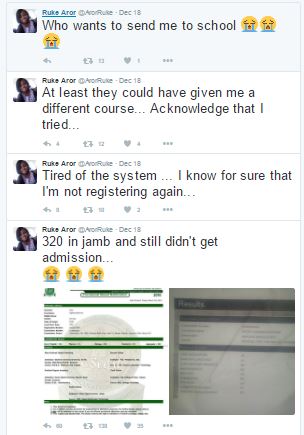
The daily trust in one of its reports on education stated that the Katsina state government was considering if it should redeploy its directors in the ministry of education to public primary and secondary schools and it was stated in the same report that the ministry has about six hundred directors.
However, a reliable source in Katsina state that I contacted to confirm the authenticity of the report said “I couldn’t respond to this early enough (i.e. my enquiry on the veracity of the report) as I had nothing much to say. I have discussed with a retired Permanent Secretary, Education, Katsina. In the MOE (Ministry of Education), anyone who has reached GL16 (Grade Level 16) they consider him a director even though he may not be designated as such; he has not formally be appointed as such with specific portfolio.”

Katsina state has a high number of out-of-school children in the country and it also has fewer females in education compared to the male child enrolment in the state. For a state that has 600 directors of education, albeit many with undesignated portfolios, it means the state government is probably expending a significant percentage of its education budget on undesignated directors.

The ministry of education probably has more directors (designated and undesignated) than the total number of junior secondary schools under its management. The ministry will probably be busy spending more of its education budget on management staff’ salaries, welfare and pensions. In the 2016 JAMB application data made available on JAMB’s website, Katsina state had fewer successful applicants between 2011 and 2015 than the national averages within the same period.

Now back to the idea of redeploying some of the directors as classroom teachers by the state government, the fundamental challenge with the proposal is that – will the directors be fit for purpose? When was the last time those directors taught or were actively engaged in any formal teaching activity? It is also important to note that some of those directors will struggle with the idea of being accountable to parents and the school authorities in which they will find themselves. And in a country that a lot of people pride themselves on their social status, having those directors to operate under school policies may be counterproductive.
By analysing the data on public school enrolment (2013 – 2014) from the NBS, it is important that the state government through its ministry of education invest significant percentage of its education budget in the primary education sector whilst it provide support to families with children of pre-primary school age in the areas of early childhood literacy and numeracy teaching. Also, the government should use the local media outlets, traditional bodies, religious institutions and community leaders to engage families with children of school age so as to encourage active participation from such families and their wards in the state’s public education system.
Furthermore, the government needs to collate data on a regular basis on the rate of enrolment in the private fee paying sector of the state’s education sector. It is important to note that a 4% enrolment at the early years’ stage in the state’s public education sector in 2013 and 2014 respectively is too low, putting into perspective that – for most of the children that are of that age they probably would have started primary school in less than one to three years after the data was collected. Hence, it becomes important and pertinent on the state government to make sure that its early years education programs are not just restricted to the four walls of the formal early years’ centres but taken to parents, families and children wherever they are in the state.
There is also an important trend that was observed from the data analysis when looking at the number of pupils in the secondary sector. In 2013 and 2014 just 11% pupils were enrolled in the junior secondary education out of the total number of pupils enrolled in the state public school sector. It is important to find out the factors influencing the sharp decline in secondary school enrolment in the state and create a very robust and responsive structure that will address such an anomaly. The government also needs to invest in its adult education sector so that those adults that missed out from formal education in their youths can go back to access formal education in adulthood and this will invariably influence how they’ll see and value formal education and hopefully they’ll be able to assist children in their education.
The state government needs to invest in the education of its teaching force, it has more unqualified teaching staff in its schools than the national average, and as well has a very low number of teachers (422 in 2013 and 650 in 2014) with degree and teaching qualification. Also, it has an above national average when it comes to the number of NCE (Nigeria Certificate in Education) holders (8,824 in 2013 and 10,555 in 2014) that are under its employment as teachers. The government needs to invest appropriately in the area of continuing professional development (CPD) like In-service Training (Inset), encouraging community of practice amongst its teaching force, workshops, conferences, seminars, symposiums and advanced studies at the university level.
Are you in Katsina? What is your reaction to this post? E-mail us at editor@edusounds.com.ng
You can also contact us in the following ways:
Tweet: @EdusoundsNg
WhatsApp: +44 7424 717865
Text an SMS +44 7424 717865 (international)
Or use the comment form below.
Please, leave your thoughts on this post in the comment section and feel free to share the article with your contacts. Thanks for taking out of your precious time to read my article/s!
If you like this post, kindly subscribe and/or follow me on Twitter @otukogbe and @EdusoundsNg or on Facebook at edusoundsng.





I am of the opinion that the directors won’t perform well as class teachers. But given that they were level 16 teachers, some may actually do well.
Then how the state got to give portfolios to that number of people is still confusing.
That’s the challenge with the Nigerian public sector. We expend so much resources on recurrent expenditures at the expense of developments. Nothing stops the state government from retiring some of the directors. The state government should employ qualified teachers.
The directors will not be productive because they would have become out of touch with the reality of the classroom.
More so, such was tried in Oyo state in the last 6years with no improvement in student performance or quality of teaching